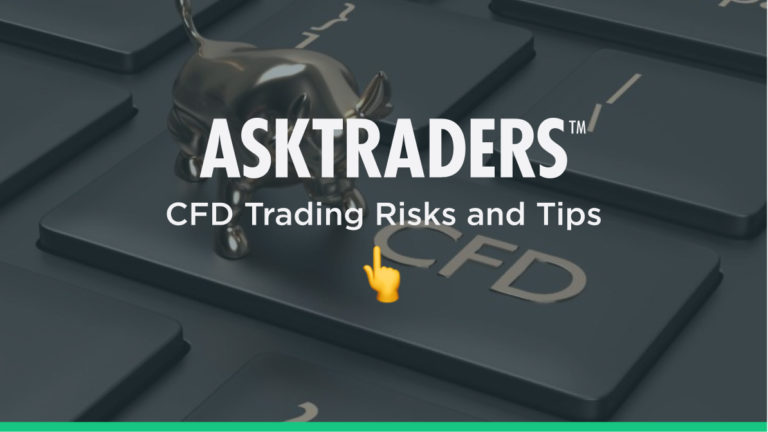
No new traders with even a basic knowledge of the market go into it thinking that they are onto a sure thing. It is common knowledge that your investments can go down as well as up, and they definitely will. All successful CFD traders, however, incorporate risk management into their trading strategies, and it can come as a surprise to new traders to realize that it is perfectly possible to trade CFDs even if you are naturally risk-averse. So, how do the risk-averse handle CFD trading? They put systems in place, develop discipline and practice good risk management. Specifically, they follow a few basic guidelines.
3 Approaches for Risk Management in CFD Trading
1. Learn good money management
This may sound obvious, but many new traders put all their time and effort into learning about trading strategies without paying much attention to money management and how it applies to their approach to risk. To practice good money management, traders need to:
- Practice position sizing
- Recognize CFD trading risks
- Routinely analyze and evaluate those risks
- Establish solid solutions to reduce those risks
- Apply and manage these solutions on a consistent basis
- Develop the discipline to apply and manage these solutions regardless of personal feelings and emotions on any given trading day
Money management might involve implementing a variety of strategies together, such as putting stop losses in place, putting limits on how much leverage to use and never risking more than 2% of overall capital on any one trade. Once in place, you need to follow money management strategies under pressure, regardless of circumstances or emotions.
Although most traders recognize the value of good money management, not all have enough discipline to apply it consistently. Money management requires traders to constantly monitor their positions and take regular, necessary losses because when it comes to trading, loss-taking is a necessary part of long-term success. Inexperienced traders often lack the discipline to practice strategic loss-taking, and those who are determined to win big or go home, unfortunately, tend to end up going home broke. An advantage for naturally risk-averse traders is that they may find it easier to take necessary small losses when they are aware that the alternative is a larger loss later.
2. Rely on technical analysis
There is no excuse for CFD trading based on hunches, tips and lucky numbers. The technical indicators available to modern online traders can be combined to allow even new traders to develop solid trading strategies based on an in-depth analysis. It will take time to learn how to use, monitor and combine technical indicators, but this is invariably time well-spent, as it allows less experienced traders to develop trading strategies that minimize losses and let them stay in the game for the long term.
Technical indicators are not infallible, but neither is anything in CFD trading or trading in general. There are even predictable reasons why technical indicators fail, and understanding these can help traders avoid common pitfalls and recognize false indicators. Fundamental analysis has its place, of course, but technical analysis is definitely an area that the new risk-averse CFD trader needs to pay special attention to. New traders are not going to understand every technical indicator straight out of the gate, but for those who are risk-averse, every minute spent on learning technical analysis is worth it.
Most CFD brokers have extensive online training resources, and it is common to find many training videos, webinars and online articles covering technical analysis on any broker site. It is advisable to learn one indicator at a time and really become familiar with its features and functions. However, technical indicators are meant to go together to create a balanced view of the market. Risk-averse investors will get the most out of technical analysis as they learn to combine several different indicators to create big-picture analysis and stay alert to the false indicators that can easily trip traders up.
3. Stay Cool
This practice is an extension of both points detailed above. Many new traders simply get too emotional over trading and start to trade with their hearts rather than their heads. CFD trading is a high-pressure situation, and money is fraught with emotion, especially when you are losing it or appear to have a chance to gain a large amount of it.
Traders find it hard to maintain discipline and willpower over the course of a trading day, even if they start out with plenty of money. They start to follow hunches, listen to their intuition or take a gambler’s attitude of believing that they are “on a winning roll.” They ignore the technical analysis and override the very sensible risk management strategies that they put in place.
For the risk-averse who want to try CFD trading, there are a few very sensible ways to go about it. Most CFD brokers offer risk-free demo accounts to allow new customers to thoroughly learn their systems and platforms using the virtual money before putting any of their own capital at risk. Some of these demo accounts are usable long-term, but most have a time limit on them. All offer the same experience that traders can expect when they sign up for their live account.
Another strategy that risk-averse traders might want to consider is to try some type of automated trading. This carries risks of its own, of course, and needs careful monitoring, but there are systems where investors can create an automated trading strategy based on attitude to risk, setting very conservative parameters if that is what suits their requirements. Social or copy trading might also appeal to the risk-averse, as it is possible to choose a conservative trader and duplicate those trades to create a naturally more conservative trading strategy.
“Risk-averse” and “CFD trading” may not be two phrases that most traders associate with each other, but with a little work and common sense, it is almost always possible to create a trading strategy that fits a potential trader’s approach to risk.
PEOPLE WHO READ THIS ALSO VIEWED:
